Pumice: what is it and where is it used?
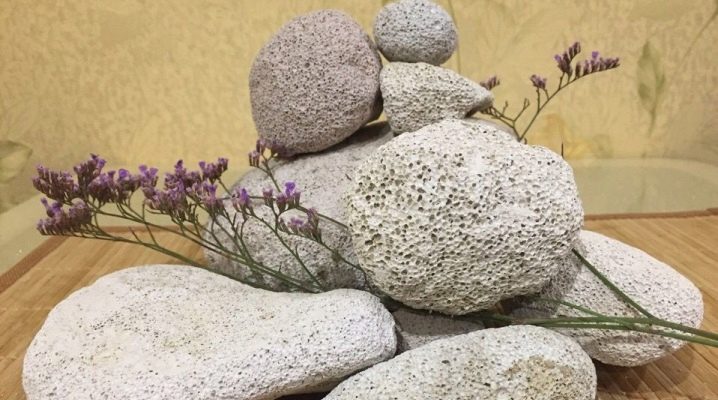
Pumice is in almost every home. So it is customary to call a bar of foamed concrete, although in reality it has little in common with a real substance. From the material of this article, you will learn what pumice actually is, what is its description and texture, origin, benefits and harms, properties and types.
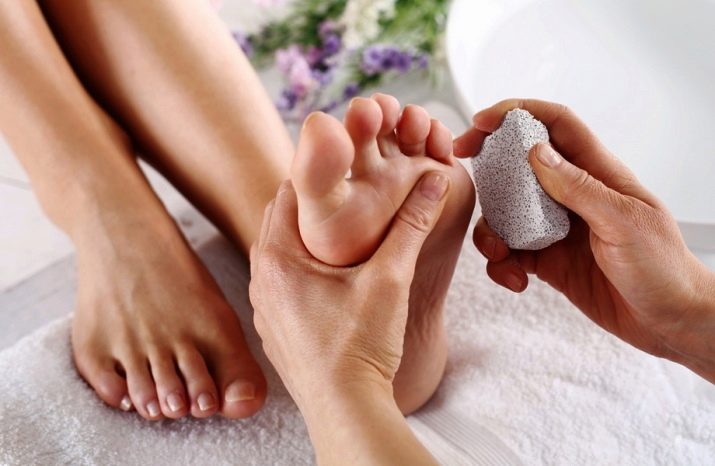
What it is?
Natural pumice is nothing but rock or hardened lava foam. It belongs to minerals, looks like a stone and seems dense. In fact, the mineral is very light, impregnated with pores. Therefore, it does not sink in water and can be crushed.
The distinguishing features of igneous pumice are the porosity of the structure and the uniformity of composition. Its color can be whitish, yellowish and gray. Outwardly, pumice resembles volcanic tuff. However, unlike it, it has a smaller and more ordered arrangement of bubbles. Its chemical composition differs from slag.


Origin
Volcanic rock is formed during the rapid cooling of acidic and medium lavas, supersaturated with gases. Its formation can be compared to a splash of carbonated water from a bottle. Foaming of the mass occurs due to dissolved gases.It is they who prevent the transformation of the mountain lava mass into obsidian (volcanic glass).
Gases are released from the liquid due to a sharp decrease in pressure. The result is a natural mineral called porous volcanic glass. Different types of rock foam come out of different deposits. She has a different color, composition, and appearance.


Mineral and chemical composition
Coarse-bubbly or long-fibered, hair-like volcanic glass has an acidic composition. It is formed during explosive eruptions and consists of feldspars, predominantly orthoclase (up to 25%) and quartz (up to 75%).
According to the chemical formula, the substance contains SiO2 70-75%; Al2O3 10-14%; Na2O 2.5-5%; K2O 1.5-5%; Fe3O4 1.5-3.5%; CaO 0.2-2.5%. The main areas for the extraction of material are the places of active and extinct volcanoes. In this case, the formation of volcanic porous glass occurs due to the porosity of the upper part of the lava.

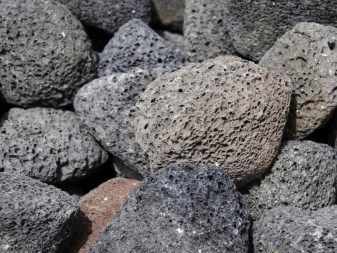
Due to the difference in composition pumice is liparitic, andesitic, trachytic, basalt. The shade of volcanic matter is also different. If there is a lot of iron in pumice, it is colored black. With a high percentage of nickel, titanium or calcium, the material turns blue or yellowish.
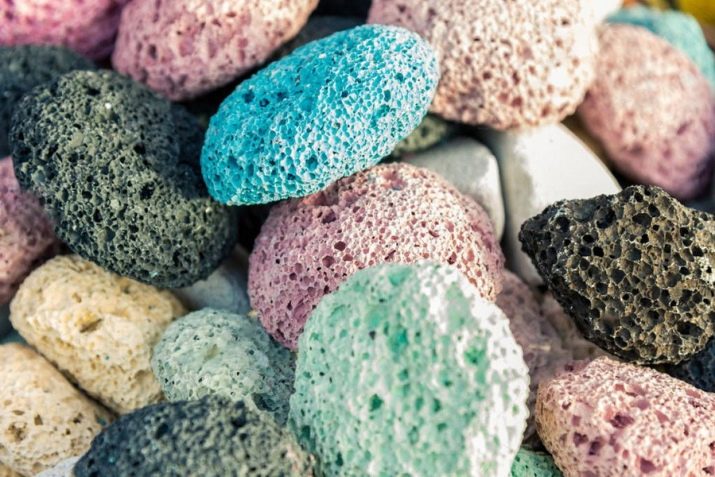
Deposits and production
Volcanic porous stone is mined in Russia and Europe. The mineral is found in the Caucasus, large reserves of the mineral are located on the western coast of Kamchatka and the Kuril Islands. At the same time, pumice is mined in places where volcanic activity is active or has recently died out. Based on the deposits, the form of occurrence of pumice can be different.
For application important criteria are pore size and type of glassy substance. The stone is coarse and finely porous. The structure of its rock can be fibrous, bubble or cellular, foamy.


Over time, the structure of the material changes: the frozen rock cannot withstand high pressure and prolonged heating.
Under natural conditions, it is destroyed over decades. Often, pumice is extracted from deposits in the form of bulk material with different types of fractions. Deposits in Kamchatka are considered first-class material, but the profitability of development is reduced due to the high cost of transportation. Considerable volumes of natural abrasive are mined in Armenia, Italy, Germany and New Zealand.
Pumice is mined with excavators. In addition, lone prospectors extract it manually. Pumice is also supplied to the world market from other countries: Japan, Austria and France. Pumice blocks are mined from the quarries of the Aeolian Islands in the Tyrrhenian Sea, the material is also found in the Rhine Valley, as well as in some states of America.

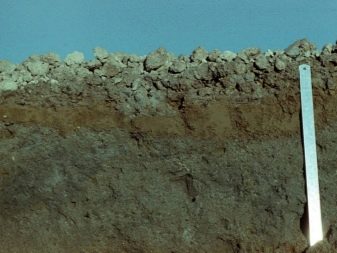
Benefit and harm
Depending on the type of pumice, it has a number of useful qualities. This substance has a wide range of applications, making it an indispensable product in various fields of production. Pumice is safe during use, not harmful in contact with the skin, it replaces many types of raw materials - it is a building material, a skin care product, and a heater.
In fact, pumice can be called a universal substance used in everyday life. Due to its durability and resistance to caking, as well as the possibility of pressing, pumice is used everywhere. However, she is not afraid of wet freezing.
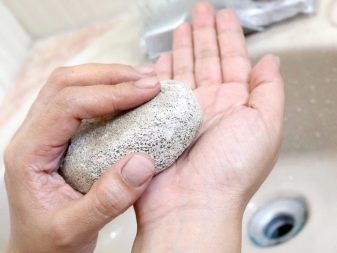

But buildings created with its use need additional cladding.
However, pumice is not so harmless - natural mineral can become hazardous if it enters the water. For example, its giant accumulations can cause damage to hydraulic structures (dams, sluice gates). In addition, pumice chips can grind down the sides of ships. In small quantities, this material does not cause harm.
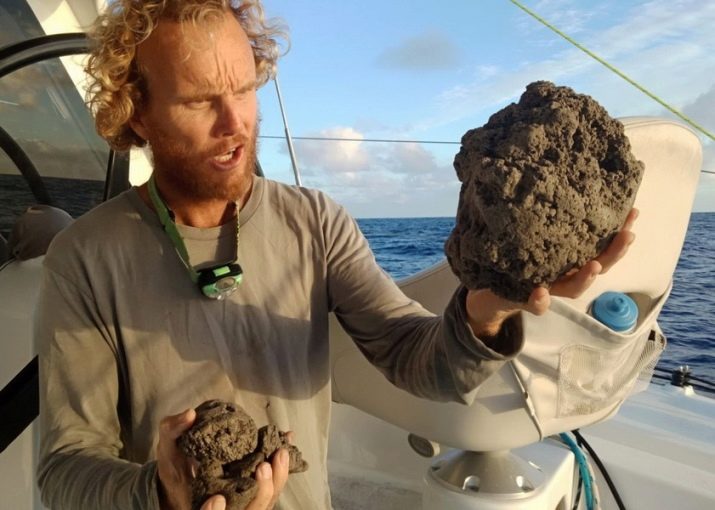
Properties
The physical and chemical characteristics of volcanic glass are different depending on the deposit. The mineral, which is silicon dioxide, can have different levels of density. Sometimes this figure reaches 80%. Interporous piers are very thin, they have sharp and cutting edges. Pumice is light and voluminous.
The specific gravity of natural porous glass varies from 1.9 to 2.2. The melting point of pumice is 1300-1450 degrees C°. Its density, depending on the composition, can vary from 0.5–0.6 to 1.3–1.4 g/cm3. On average, the porosity of a substance is approximately 90%, which explains its buoyancy in water.
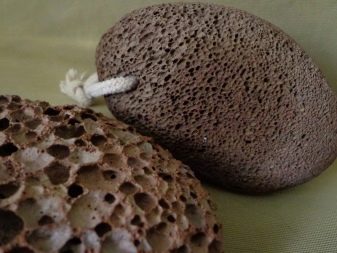

The greater the porosity of the mineral, the higher its thermal insulation qualities.
The hardness of igneous pumice on the Mohs scale is about 6. The hardened porous stone has high thermal insulation properties. Due to the closed pores, the substance has high frost resistance. Natural pumice is fire resistant and chemically inert.
Depending on the deposit, it may contain crystalline inclusions (eg mica, plagioclase, pyroxenes). In addition to chemical inertness and low specific gravity, natural mineral stone with a porous structure is resistant to caking, rotting, and damage by rodents.

Varieties
Today, pumice can be not only natural, but also artificial.. Each type of material has its own characteristics, pros and cons. For example, according to the type of deposit, pumice is primary, bulk and secondary. This is due to deposits of porous stone, coupled with volcanic ash and tuffs.
Its formation is associated with the type of outflowing rock. For example, it can be a structural type of cooled lava characteristic of a particular area, or the result of a loose ejection of a volcanic eruption (ash, sand, volcanic bomb). The found mineral in deposits of the first type is characterized by a gradual transition from pure glass to a porous structure. The secondary stone is nothing but the result of the transfer or later redeposition of the mineral.


natural
The natural mountain mineral is more strength and durability. He environmentally friendly and is suitable for use by people suffering from allergies. Such a volcanic stone is characterized by greater porosity and resistance to crumbling. Using it does not cause inflammation. This pumice stone scrapes better, it is practically not erased during operation.
It differs from its synthetic counterpart in natural tones, while synthetic pumice comes in pink and blue. The larger the pore size, the coarser the volcanic stone cleans off rough skin.
Minerals with tiny pores, on the contrary, only polish the treated skin. Therefore, large-pore pumice is used to treat rough skin less often.
The disadvantage of the mineral is its rapid absorption and long-term moisture retention, which leads to the microbial settlement of the stone.
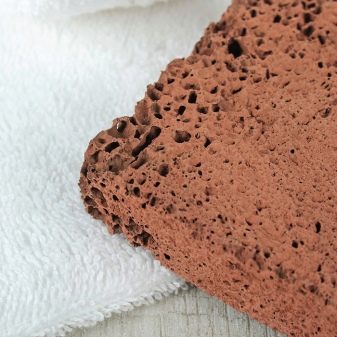
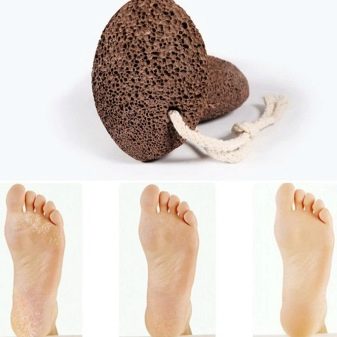
Artificial
In comparison with natural stone, a synthetic analogue has several advantages.It is resistant to water absorption and has a softer composition. Artificial pumice is cheaper, which makes it attractive to a wide range of buyers.
Despite the fact that this substance retains its original condition longer, it is heavy and characterized by abundant crumbling, it can injure the skin when removing coarsened cells. However, this type of pumice stone is preferred for use by people who have fungal infections of the feet or nails.
During the use of artificial stone, the formation of an environment for the appearance and reproduction of microorganisms is excluded.
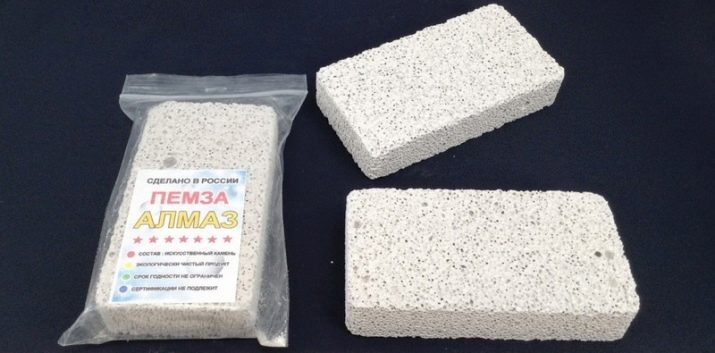
What are they made of?
Artificial pumice is made in many ways. It is distinguished by a large closed pores. The production of this substance is carried out at metallurgical plants, while the main raw material for production is slag, which remains in blast furnaces after metal melting. The porous structure of the slag composition receives at the time of placing the hot substance in the pool with the simultaneous supply of water.
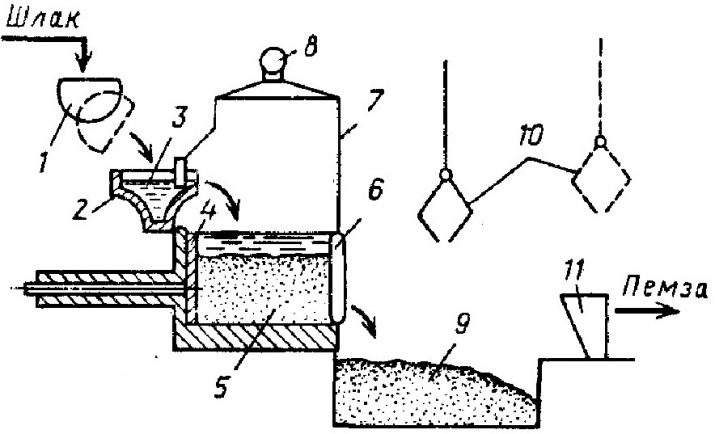
Water, connecting with the melt, turns into steam, which, along with a uniform distribution, swells the slag mass, creating artificial pumice. After cooling, large porous slag pieces are passed through a special crushing device, and then the raw material is sorted into different fractions. Slag-type pumice has most of the characteristics of its natural counterpart, but is inferior to it in strength.
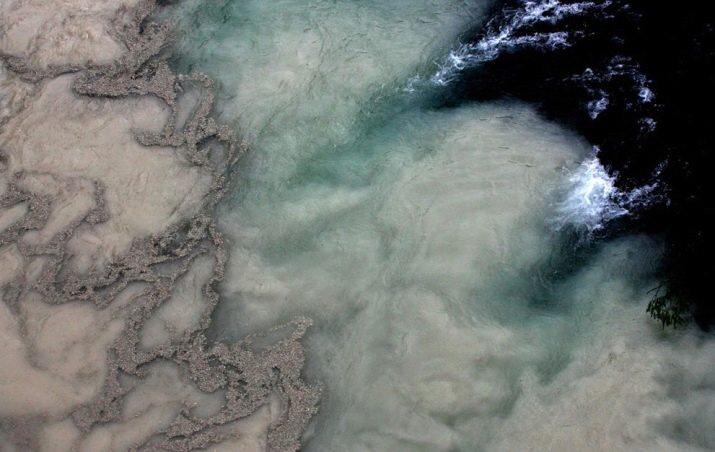
The chemical formula of another artificial pumice includes crushed glass. The production of this variety does not differ from the method of manufacturing foam concrete. Artificial pumice can be made by fusing quartz sand with cementing agents.In this case, the resulting product is characterized by the uniformity of grains and hardness, which differs from the natural analogue.
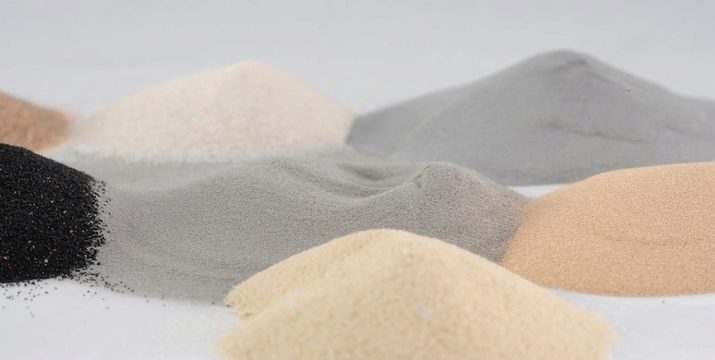
In addition, artificial pumice is also formed with the glory not of sand, but of a natural powder of natural ground volcanic stone, which is sorted depending on the size of the grains. At the same time, materials with waterproof characteristics are used as binders. Artificial stone consists of a mixture of kaolin, chalk, sand and feldspar.

During production, it is important to achieve the necessary chain reaction, due to which a substance with a porous structure is obtained.
Such pumice comes on sale under different numbers. Moreover, in addition to porosity, the final product of each group differs in its hardness characteristics. The grain can be large, medium, fine and powdery. Pumice is also found on sale in the form of a powder, which is added to scrubs for skin resurfacing without the risk of mechanical damage.

Application
Before soap was invented pumice was considered the main means of wiping dirt from the human body. Sculptors of ancient Greece used it to polish marble statues, as well as terracotta and limestone ornament details. At one time, finely porous material was used to polish papyrus and parchment sheets. Today it is used in various fields, in addition, it is added to various means and products.
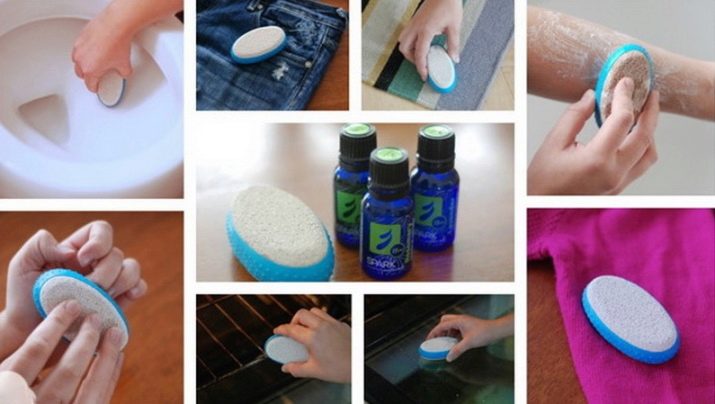
It is especially widely used in industry. For example, in construction it is used as a filler for lightweight concrete, obtaining pumice concrete. Pumice is a necessary inclusion to Portland cement, lime and backfill-heat insulator. She closes the voids in the walls, if required by the construction technology.Pressed wall blocks are made from it.

Pumice stone is an excellent water filter and deodorizer.. Few people thought about the fact that it has found application in dentistry. In addition, it is considered an excellent abrasive material, which is applied to industries such as wood and metalworking, felting, leatherworking. The mineral is used for grinding marble, as well as other lithographic stones.
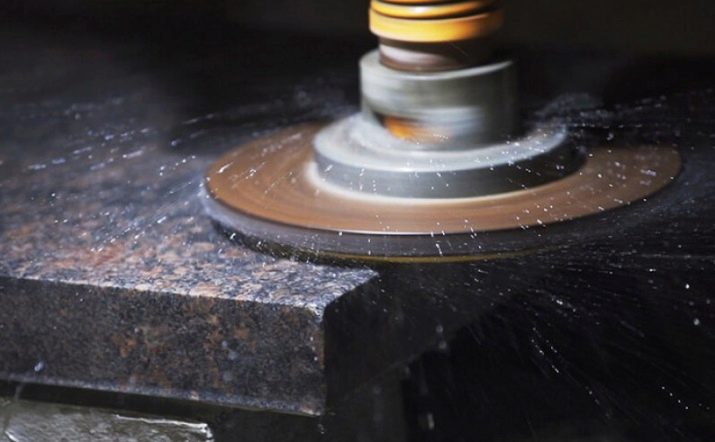
This substance is widely used in the chemical and petrochemical industry, as a catalyst and an oil purifier. It is used for the synthesis of organic substances. It is a substrate for the production of filtered catalytic and ion exchange mixtures. Moreover, pumice is also used in the manufacture of explosives. The addition of a powdered mineral to dynamite facilitates the initiation of an explosive device.

In addition, the miner has found application in gardening. Thanks to him, it is possible to grow plants using the method of hydroponics. In this case, pumice simply replaces the necessary soil. In the glass industry, a natural natural mineral is used. Technical glass is brewed from it (mainly glaze for tanks or pipes). Due to its grinding properties, pumice is used in production of cleaning products.

Natural volcanic stone is widely used in cosmetology. It is a gentle remedy for removing rough skin on the heels. The fine fraction variety is used to make homemade soap scrubs by adding a powdered type of mineral to the composition.


The cosmetic product is non-toxic, does not provoke skin irritation and is considered hypoallergenic.
Pumice stone is added not only to cosmetics (for example, to creams with a greasy texture). He used as an additive in some tooth powders and hand washes. It is a soft abrasive or a type of pumice with a powdery structure. Such an additive is used as a peeling effect with a gentle effect, adding to products for the face, hands, feet, and the whole body.


She's being used in beauty salons and pedicures. At the same time, pumice is considered an elite cosmetic product today. Despite the mass of varieties of drugs used, it is one of the most effective means for skin rejuvenation. In addition, decorative items (beads, brooches, small accessories) are made from pumice, which are sold at the price of analogues made from expensive materials.
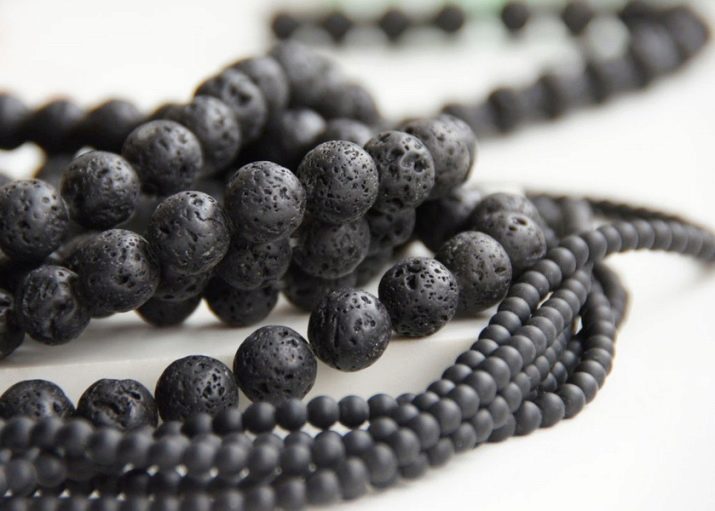
In addition to practical applications, pumice used for interior decoration. From it create bases for floristic compositions. For example, it can be a flower greenhouse on a loggia or a glazed gazebo. In this case, a recess of the required shape and size is created in a pre-selected place on the stone, after which it is treated with a nutrient solution and decorated, for example, with moss.
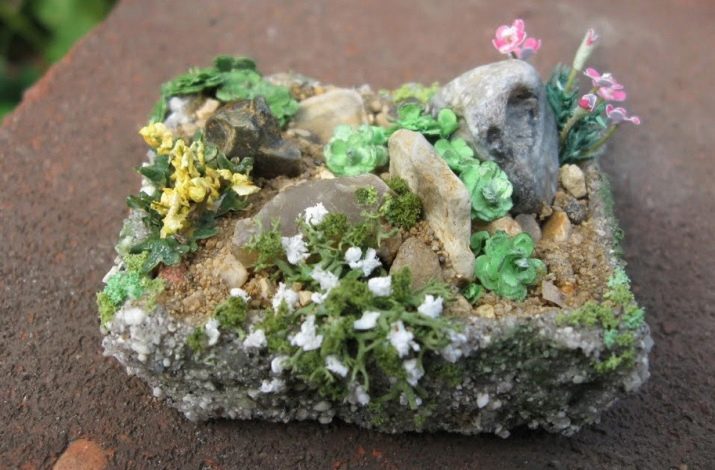
Those who are familiar with pumice stone use it in everyday life for a wide variety of needs. For example, it is an excellent and effective tool for getting rid of pet hair from upholstery, carpets and car seats. To clean the surface, it is only necessary to run a bar of porous stone over the problem area several times.
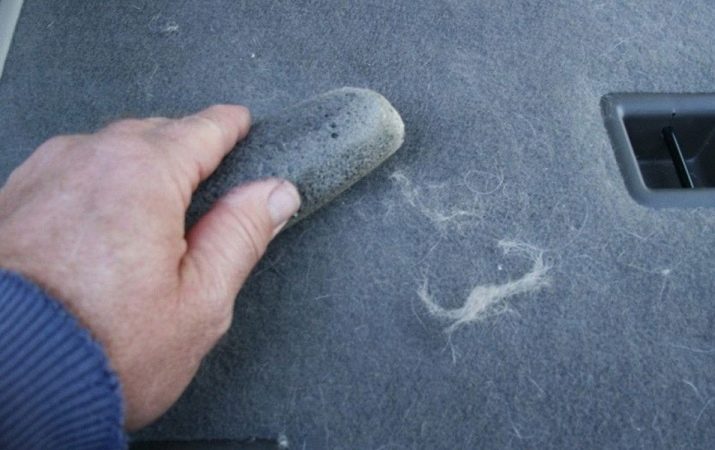
In addition, in everyday life, pumice stone is used to clean other surfaces. With it, you can clean oven elements such as metal grills. Also, the mineral is suitable for combating limescale, characteristic of toilet bowls.With it, you can remove a significant part of the pellets from some types of clothing.


The fair sex use pumice as a means of depilation. For these purposes, it is soaked for several minutes in hot water, then lathered with soap and driven over the skin in circular motions. Pumice is also used as a kind of diffuser for aromatic oils. Oil is dripped directly on the bar and placed in the right place.


Watch videos on the topic.























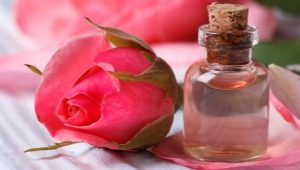




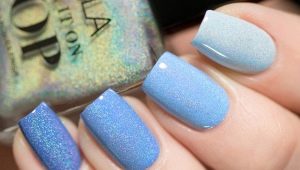
I ordered in the form of a heel - comfortable)